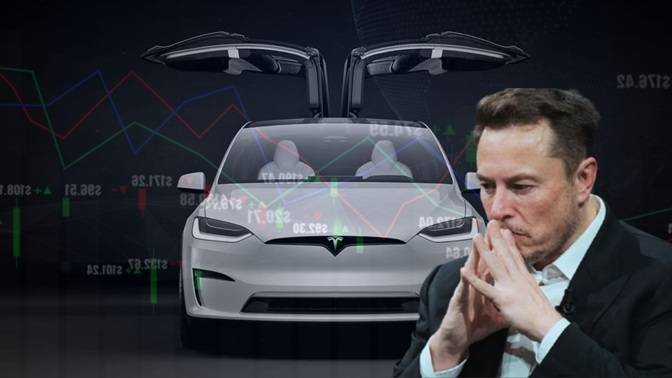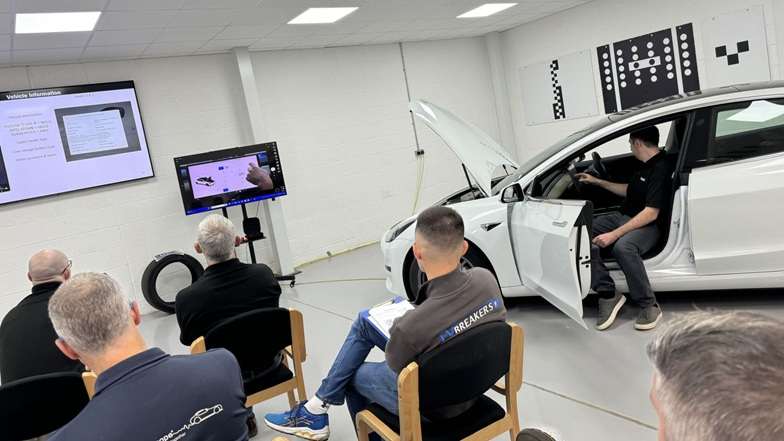Tesla has long dominated the electric vehicle (EV) market in California—but now, the Golden State is showing signs that the EV giant’s grip is slipping. According to the latest data from the California New Car Dealers Association (CNCDA), Tesla registrations in Q1 2025 dropped a significant 15.1% compared to the same period last year. That’s a big deal in a state that plays a major role in the U.S. electric vehicle landscape.

California isn’t just any market—it’s the EV market in the United States.
- Over 20% of all new vehicles sold in California are zero-emission vehicles (ZEVs), compared to just 8% nationwide.
- The state alone accounts for more than 28% of all EVs sold in the U.S.
That kind of concentration means that what happens in California can set the tone for Tesla’s performance across the country. For years, Tesla thrived in this environment. In 2022, it held a staggering 70% share of California’s EV market. Even though competition began to rise, Tesla still managed to dominate. But the tide has turned.
Tesla’s Market Share Is Shrinking
Tesla’s California EV market share fell dramatically—from 55.5% in Q1 2024 to just 43.9% in Q1 2025. Meanwhile, registrations for other electric vehicle brands jumped 35% during the same period.
So while Tesla sales were dropping, other automakers like Hyundai, Ford, Kia, and BMW were gaining ground. This suggests that Tesla isn’t just losing out due to overall market trends—the competition is catching up, and fast.
What’s Causing Tesla’s Decline?
There are a few key reasons behind the slump in Tesla’s California sales:
1. An Aging Lineup
Tesla hasn’t introduced many new models lately. Besides the Cybertruck—which remains a niche vehicle—the main lineup (Model 3, Model Y, Model S, and Model X) hasn’t seen major design overhauls in years.
EV buyers in California are savvy and want fresh features and updated tech. When competitors are launching stylish new electric SUVs, crossovers, and sedans, Tesla’s cars can start to feel a bit stale.
2. CEO Controversies
Elon Musk’s political involvement may also be taking a toll. The CNCDA specifically pointed to “backlash against Elon Musk’s political initiatives” as one reason for Tesla’s shrinking market share.
During Q1 2025, Musk made headlines for controversial political commentary and high-profile stunts—including promoting Dogecoin and participating in political events. These actions sparked protests and online boycotts, particularly among liberal-leaning Californians—many of whom were early Tesla adopters.
Brand loyalty is powerful, but when a CEO becomes the face of controversy, it can erode consumer trust and drive buyers toward competitors.
3. The Model Y Gap
Tesla’s popular Model Y faced a transition period in early 2025, as the company prepared to roll out a refreshed version. This shift caused a significant dip in deliveries—10,000 fewer units were registered in Q1 compared to the previous year.
Without a strong pipeline of preorders or a clearly communicated launch plan, Tesla missed out on momentum during this changeover.

There’s still hope for Tesla—but it’s clear the company needs to act fast if it wants to reverse the trend in California.
- The refreshed Model Y could help regain some lost ground, but early signs suggest Tesla doesn’t have a large backlog of eager buyers waiting for it.
- To stay competitive, Tesla may also need to speed up work on truly affordable EVs—especially as rivals ramp up offerings in the $30,000–$40,000 range.
- Brand repair is another challenge. Musk’s political activity isn’t going away, so Tesla might have to work harder to separate its product appeal from its CEO’s public image.
To avoid another year-over-year drop, Tesla will need to deliver over 50,000 vehicles in California this year. That’s no small feat, especially in a market where loyalty is fading and options are growing.
Tesla’s Q1 2025 performance in California may be more than just a temporary dip—it could be a sign of a deeper problem. While the company remains a leader in EV technology, its dominance is no longer guaranteed. With fresh competition, consumer expectations rising, and brand perception shifting, Tesla faces a critical moment in its journey.
The company’s next steps—product updates, pricing strategies, and perhaps even leadership tone—could determine whether Tesla bounces back or continues to slide in the market that once embraced it the most.
PEOPLE WHO READ THIS, ALSO READ




